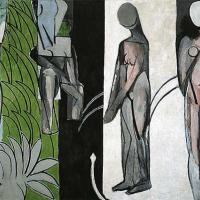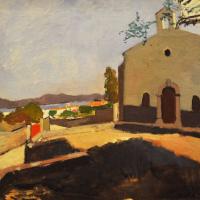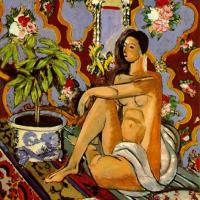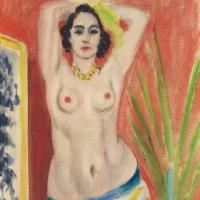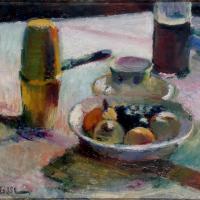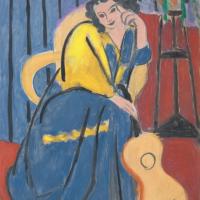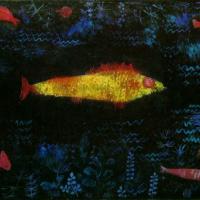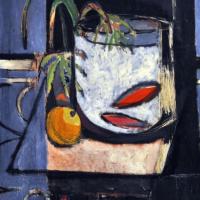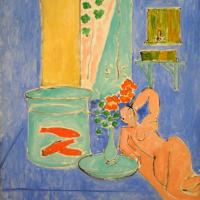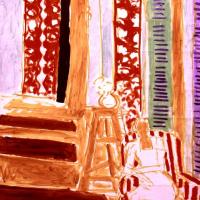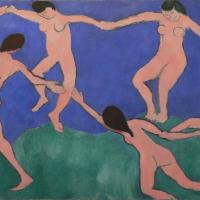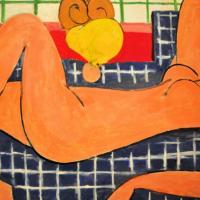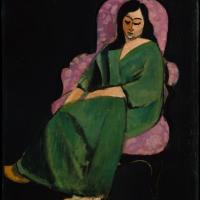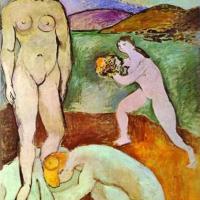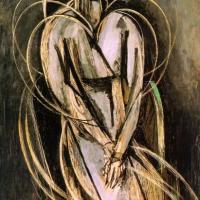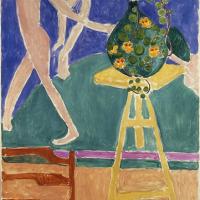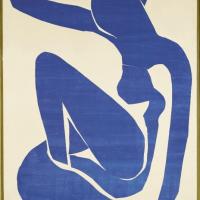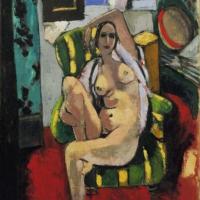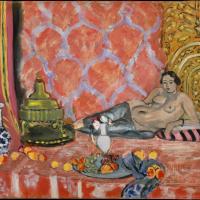Henri Matisse
Bathers By A River
$450.00
Bathers with a Turtle
$450.00
Carmelina
$450.00
Chapel Of Saint Joseph
$450.00
Crockery On A Table
$510.00
Decorative Figure
$450.00
Dishes And Fruit
$450.00
Femme En Buste
$450.00
Fruit And Coffee-Pot
$450.00
Goldfish
$450.00
Goldfish And Sculpture
$450.00
Goldfish And Sculpture
$450.00
La Danse
$450.00
Large Reclining Nude
$450.00
Laurette In A Green Robe
$450.00
Le Luxe I
$450.00
Madame Yvonne Landsberg
$450.00
Nu Bleu I
$450.00
Odalisque With A Tambourine
$450.00
Odalisque With Gray Trousers
$450.00
Henri Matisse
Henri Matisse (1869-1954)
Henri Émile Benoît Matisse (31 December 1869 – 3 November 1954) was a French artist, known for both his use of colour and his fluid and original draughtsmanship. He was a draughtsman, printmaker, and sculptor, but is known primarily as a painter. Matisse is commonly regarded, along with Pablo Picasso, as one of the artists who best helped to define the revolutionary developments in the visual arts throughout the opening decades of the twentieth century, responsible for significant developments in painting and sculpture.
The intense colorism of the works he painted between 1900 and 1905 brought him notoriety as one of the Fauves (wild beasts). Many of his finest works were created in the decade or so after 1906, when he developed a rigorous style that emphasized flattened forms and decorative pattern. In 1917 he relocated to a suburb of Nice on the French Riviera, and the more relaxed style of his work during the 1920s gained him critical acclaim as an upholder of the classical tradition in French painting. After 1930, he adopted a bolder simplification of form. When ill health in his final years prevented him from painting, he created an important body of work in the medium of cut paper collage.
His mastery of the expressive language of colour and drawing, displayed in a body of work spanning over a half-century, won him recognition as a leading figure in modern art.
The first painting of Matisse acquired by a public collection was Still Life with Geraniums(1910), exhibited in the Pinakothek der Moderne.
His The Plum Blossoms (1948) was purchased on 8 September 2005 for the Museum of Modern Art by Henry Kravis and the new president of the museum, Marie-Josée Drouin. Estimated price was US$25 million. Previously, it had not been seen by the public since 1970. In 2002, a Matisse sculpture, Reclining Nude I (Dawn), sold for US$9.2 million, a record for a sculpture by the artist.
Matisse's daughter Marguerite often aided Matisse scholars with insights about his working methods and his works. She died in 1982 while compiling a catalogue of her father's work.
Matisse's son Pierre Matisse (1900–1989) opened a modern art gallery in New York City during the 1930s. The Pierre Matisse Gallery, which was active from 1931 until 1989, represented and exhibited many European artists and a few Americans and Canadians in New York often for the first time. He exhibited Joan Miró, Marc Chagall, Alberto Giacometti, Jean Dubuffet, André Derain, Yves Tanguy, Le Corbusier, Paul Delvaux, Wifredo Lam, Jean-Paul Riopelle, Balthus, Leonora Carrington, Zao Wou Ki, Sam Francis, sculptors Theodore Roszak, Raymond Mason, and Reg Butler, and several other important artists, including the work of Henri Matisse.
Henri Matisse's grandson Paul Matisse is an artist and inventor living in Massachusetts. Matisse's great-granddaughter Sophie Matisse is active as an artist. Les Heritiers Matisse functions as his official Estate. The U.S. copyright representative for Les Heritiers Matisse is the Artists Rights Society.
Henri Matisse: The Cut-Outs was exhibited at London's Tate Modern, from April to September 2014. The show was the largest and most extensive of the cut-outs ever mounted, including approximately 100 paper maquettes—borrowed from international public and private collections—as well as a selection of related drawings, prints, illustrated books, stained glass, and textiles. In total, the retrospective featured 130 works encompassing his practice from 1937 to 1954. The Tate Modern show was the first in its history to attract more than half a million people.
The show then traveled to New York's Museum of Modern Art, where it was on display through 10 February 2015. The newly conserved cut-out, The Swimming Pool, which had been off view for more than 20 years prior, returned to the galleries as the centerpiece of the exhibition.


